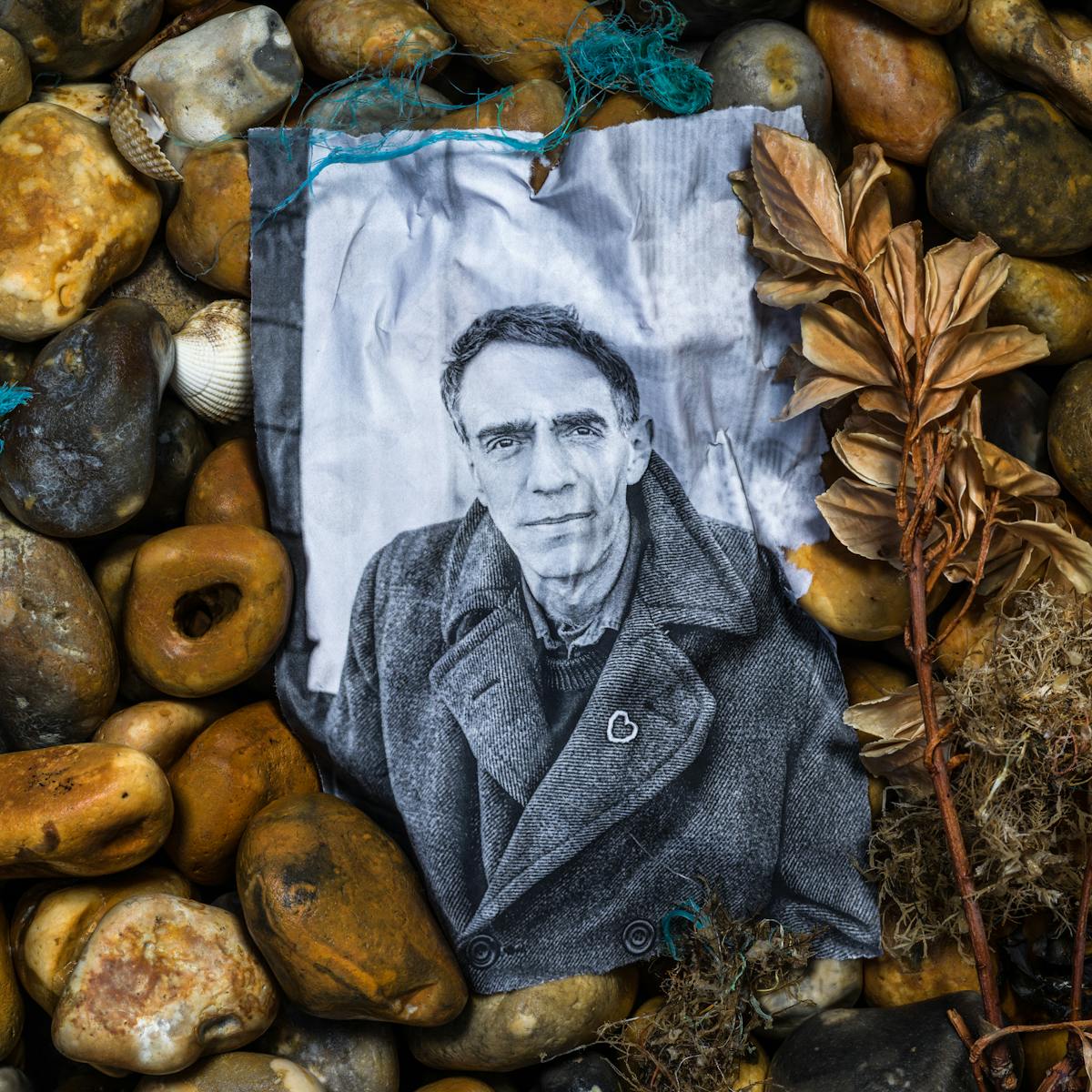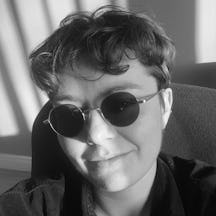Looking for medieval connections in the personal papers of 20th century artist and filmmaker Derek Jarman, historian E K Myerson was herself moved to tears by the personal traces that Jarman left behind and by the still-echoing impact of the AIDS epidemic that took his life.
At my desk in the archive, I lift the lid of a cardboard box and take out a turquoise pocket wallet. The label on the folder reads: “Estate of Derek Jarman / Manuscript Sheets: Garden Book / Diary / Death in Venice. (Some pages are tear-stained from Jarman’s eye surgery.)”
On the papers, the tear marks blur the ink into long, rusty streaks. I can't cope with looking at them. Instead I google pictures of Renaissance saints with distraught faces, beaded tears stuck onto their cracked faces with glue, and make notes. Intellectualising my response makes me feel better, but mostly because it makes me think about something else.
I glance around me and wonder what would happen if I let myself cry. I imagine the conservator typing out a new neat label to add to the file: “(Additional tearstains are the result of a researcher’s inability to control themselves in a professional environment.)”
Looking for the medieval
I am a medievalist, usually – I am used to reading death notes and wills from 800 years ago. Now I am in a back room of Tate Archive, looking for the filmmaker, writer and artist Derek Jarman, who himself was looking for the medieval.
“For years,” he wrote, “the Middle Ages have formed the Paradise of my Imagination... like the seaweed and coral that floats in the arcades of a jewelled reliquary.”
Jarman’s records have only recently found their way to this repository. Until 2018 they lived with Jarman’s companion and carer, Keith Collins at Prospect Cottage, Dungeness. Jarman made this former fisherman’s cottage his home in 1987, following his HIV diagnosis. When Collins passed away from cancer, these papers were handed over to the Tate collection. The folders are still labelled ‘Bedroom’ – ‘Painting Room’ – ‘Attic’.
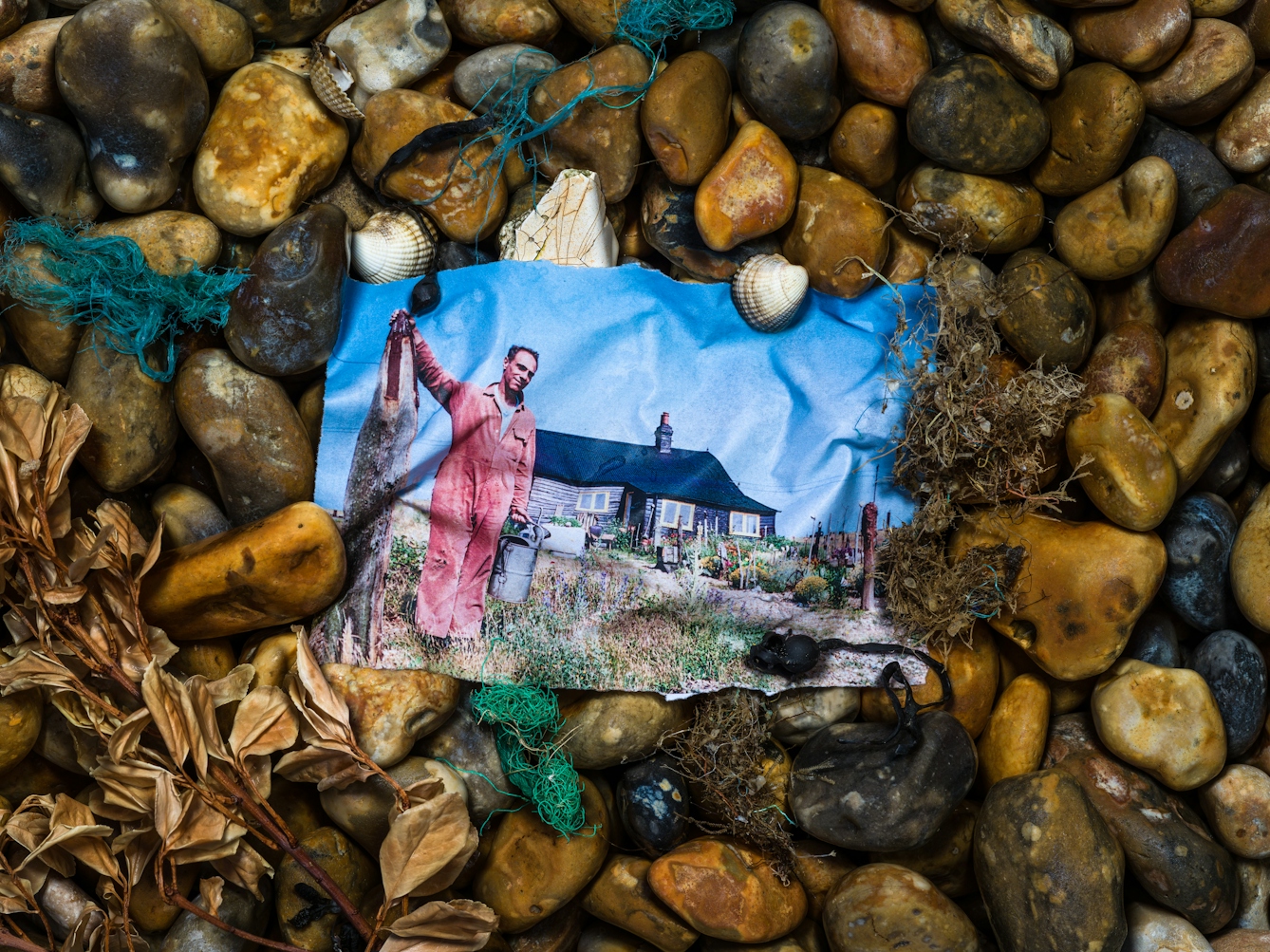
Derek Jarman at Prospect Cottage on Dungeness Beach, photographed by Geraint Lewis around 1992.
I am reading Jarman’s hospital journals from 1993. The AIDS ward at St Bartholomew’s Hospital was full, so he was placed on Colston Ward, a palliative-care unit. St Bart’s itself was facing closure under NHS ‘restructuring’.
In these traumatic circumstances, Jarman wrote a letter to the Independent in which he recalled the medieval origins of the hospital. St Bart’s was founded by a monk in the 12th century on his return from pilgrimage. To Jarman, the hospital was a “parish”, a “church”. His fine handwriting shook as he wrote in the dead of night. A saint’s vision is bound to survive even Tory healthcare policies, he promises.
I am naïvely surprised that I know nothing about these events. Friends around my age (27) don’t seem to know anything either. I ask casually, “Did you know the Tories tried to close down Bart’s Hospital?”
“You couldn't close down Bart’s,” one friend, a doctor, tells me.
I look up Virginia Bottomley, the health secretary responsible for these cuts, and find she still holds her seat in the House of Lords.
I walk out of the library into the sun, cross the road and walk to lean on the railings overlooking the Thames. I leave my girlfriend a garbled voice message in a mortifying mixture of baby-talk and archive-speak. I squint towards the river and picture Jarman walking towards the gallery. He dreamed of having his works in the Tate – only one of his paintings was bought within his lifetime.
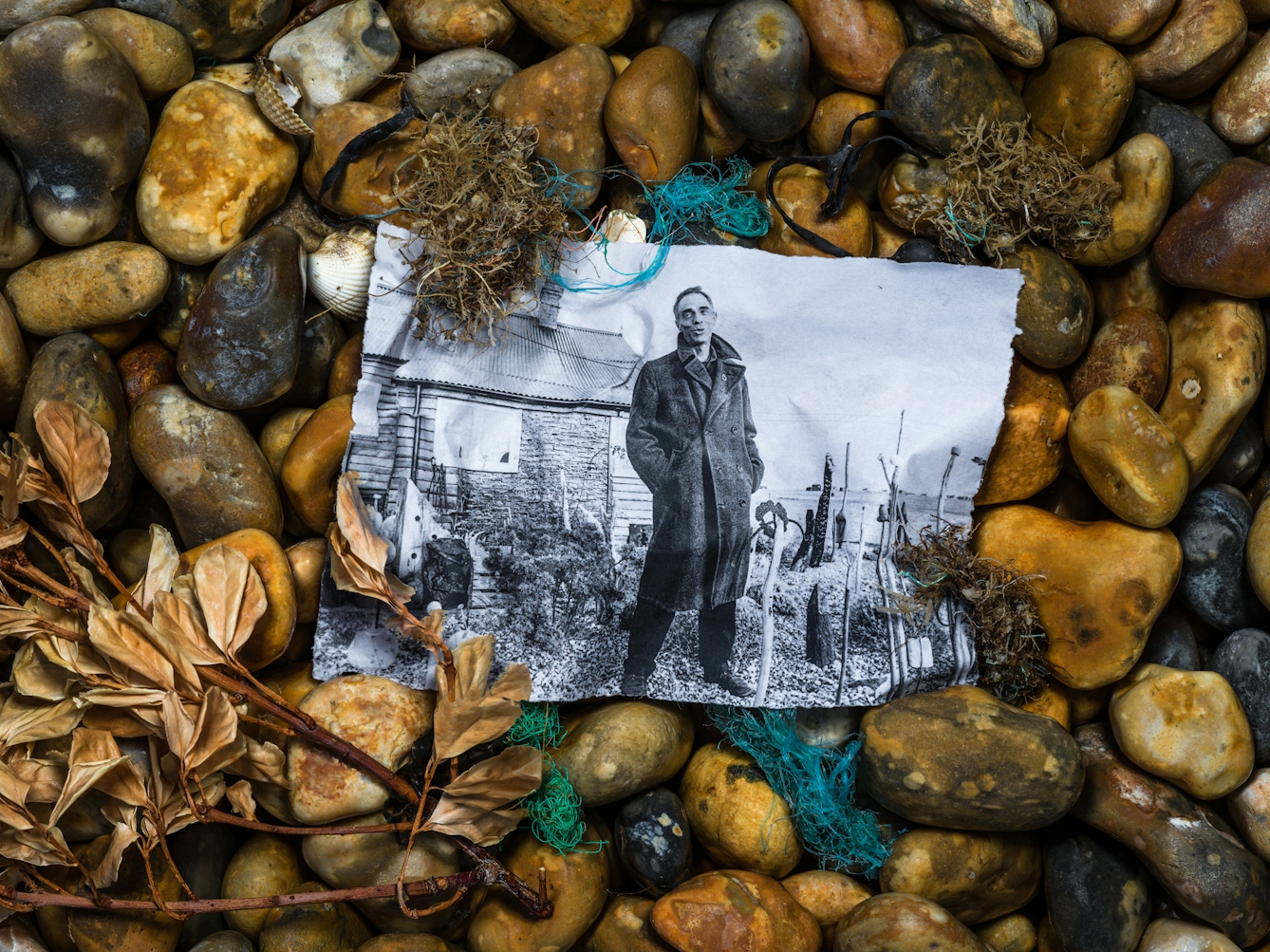
Derek Jarman at Prospect Cottage on Dungeness Beach, photographed by Geraint Lewis around 1992.
Pilgrimage to Dungeness
I decide it’s time to make my own pilgrimage to Prospect Cottage. My girlfriend comes with me. My head is full of medieval pilgrim guides, which mark the stations (locations) on the road to Jerusalem. For me: Queen’s Road Peckham, Canada Water, Stratford, Ebbsfleet, Rye, the Pilot pub bus stop. We continue by foot along Dungeness Road.
It isn’t just my imagination that makes this journey into sacred travel. In 1991, Jarman was canonised by the Sisters of Perpetual Indulgence, a Gay activist group, as St Derek of the Order of Celluloid Knights of Dungeness, in recognition of his many holy deeds and his beautiful nose. I watch the ceremony online via the British Film Institute.
Jarman’s self-conscious smile radiates from my laptop screen as I replay the footage. He wears a gold robe from his film ‘Edward II’. Asked what miracles he has performed that year, he replies simply, “Making it here.”
Medieval pilgrims used to steal from holy sites – even biting off pieces of holy wood as they knelt to kiss the shrine. At Prospect Cottage I pace around the stone circles, planted with sacred herbs from medieval books, and then walk through the gorse until I reach the beach. I take a pebble in lieu of a souvenir from the garden.
At night we sleep near the fence of the nuclear plant, in one of the former lighthouse-keepers’ cottages – I’m paying with research expenses. There are industrial sounds, clanking, a motor; the lighthouse beam roams intermittently through a chink in the blinds and the wind rushes through the pylons. I am glad that my girlfriend is here, and look over at her hair, curling onto the pillowcase.
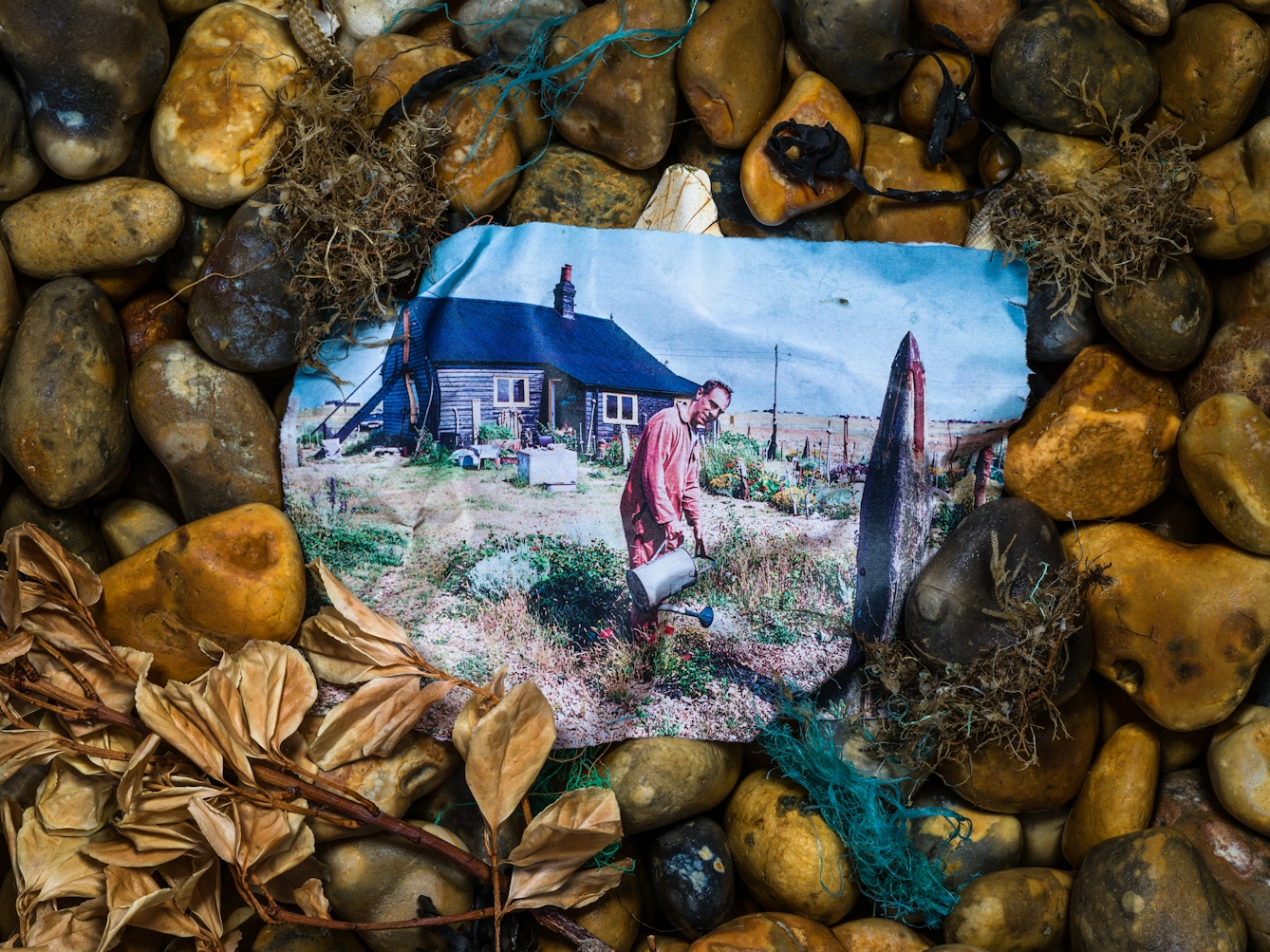
Derek Jarman at Prospect Cottage on Dungeness Beach, photographed by Geraint Lewis around 1992.
Mourning the lost boys
Back in London, I return to Tate Britain and call up Jarman’s notebooks for the 1993 film ‘Blue’. A tissue-wrapped book arrives on my desk, hand-gilded, a stone glued to the cover. I remove the paper shroud carefully, lay the book on a cushion like a relic. Who let me have these heartbreaking, delicate things?
I turn over napkins with sketches on and acetates painted with ultramarine. I’m still not used to wearing gloves in archives – the latex makes my fingers dry. With medieval books, you use bare hands. I stroke the stone, through my gloves, and try to imagine what it would be like to read this book in the landscape where it was created, with the waves breaking onto the shore:
“Lost boys
Sleep forever
Salt lips touching
In submarine gardens.”
When I leave the archive, I stroke my Dungeness pebble, embarrassed at my fetishism, and relieved to be in the open air. At home I cry into my girlfriend’s shoulder, overwhelmed by the loss of so many people I never knew, and bitter at the political survival of those who let it happen.
About the contributors
E K Myerson
E K Myerson is a writer and researcher and currently the Parker Library Early-Career Research Fellow at Corpus Christi College, Cambridge University. The collaborative essay-film ‘Submerged Reliquary of a Kentish Saint’ by E K Myerson, Sophie Mei Birkin and Bartek Dziadosz was screened at the Birkbeck Institute for the Moving Image in December 2022. Her first book, ‘The Desire for “Syria” in Medieval England’, is forthcoming with Cambridge University Press (2024).
Benjamin Gilbert
Ben is a senior photographer for Wellcome. He is happiest when telling stories with his photographs, whether that be the health implications of rural-to-urban migration in India, or the dedication of the workers who power the NHS.
Geraint Lewis
Geraint Lewis began his photographic career at the Independent newspaper in London. Nearly 35 years on, he has created an archive of performing arts images across all genres of theatre and drama, as well as dance, opera and portraiture. His photographic coverage includes profile portraits, actors’ headshots, dress rehearsals and studio-based pre-publicity images from West End productions and across the UK.
